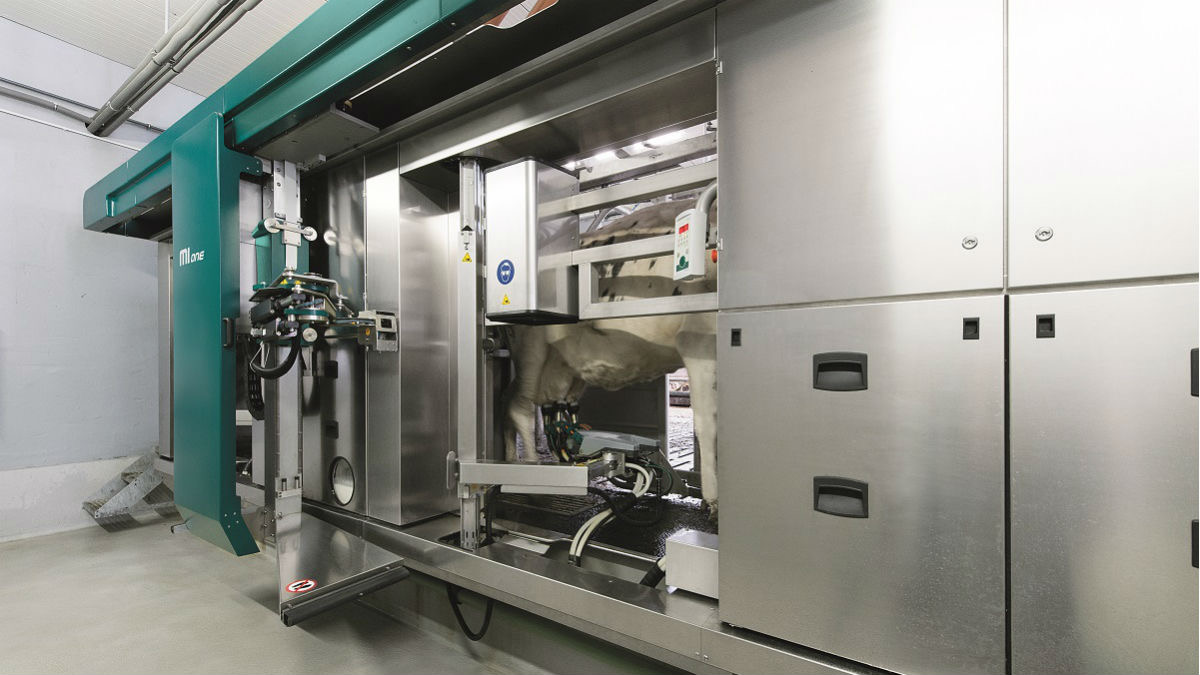
Robotics Slowly Coming Into California Dairy Barns
By Patrick Cavanaugh, Editor
It’s all associated with labor shortages, and skills and dairies aim to do something about it by bringing in robotics into the milking parlor
“If you have 3,000 cows, robotics will be a huge investment; however, most of the data collected is for robots in smaller operations,” said Daniela Bruno, who earned a Veterinary Medicine degree in Brazil and then went to grad school at UC Davis. She is a UCANR Dairy Advisor for Fresno County. “Many dairies are interested in how the robots will work in their operation because of major labor shortages,” she said.
The robotic milking machines are stationary in the milking barn, and cows will walk in at an assigned amount of times per day. “I talk about large versus small operations, because each robot, can milk between 65 and 70 cows so that you would need a lot of robots for a 3,000 cow dairy,” Bruno said.
As far as installing robots, the manufacturer has to come up with a plan. Sometimes they need to build a new barn.
Bruno noted that smaller dairies on the East Coast or Midwest have many robots, but they’re smaller operations. “They have two or three robots per dairy, while the largest one, to my knowledge, is in Chile, which has 64 milking robots,” noted Bruno.
“But it’s growing in California, due to labor regulations and the number of hours that the workers can milk cows. Dairies are now thinking if they had robots, then they will have to worry less about all the labor issues,” she said.
Bruno described how these robots work, how the cows get to the robots for milking.
“The cows have a collar, and there are several sorting gates that lead to the robot. So let’s say the cow feels the urge to be milked, but the last time she was milked was less than four hours ago. She does not have the permission to be milked again,” noted Bruno. “The dairy can decide if they want the cows milked two, three, or four times a day,” she noted.
The permissions are based on the lactation stage or if she’s a heifer if she’s a first, a second lactation cow. They’re going to control it, and everything is stored in software. And when she approaches the gate, the gate is going to open for the cow if she’s allowed to go, or if she’s not going to be able to be milked yet, the cow is sent to a waiting place where she can rest and eat.
When a cow gets the permission, she walks into the robot milking machines, which will do everything that a dairy employee would do. “It prepares the cow, cleans the cow, and stimulates the cow, then the milking equipment is automatically put on the udders,” Bruno said. “And once the cow is done milking, it applies the post dipping sanitizer on the teat, and the cow is released to go back to its bedding area.”
Bruno said that the robots have many cameras, so they know exactly what they’re doing when they’re pre-treating the cow before milking and milking the cow and post treating the cow after the milking with sanitizer.
And while dairies will need less labor in the milking barn, there will still require employees to maintain the equipment, and there are several companies that offer that service, and prices vary.
“In California, I know of two dairies that have robots already. They’re both in Stanislaus County, and one of the dairies is planning to expand to 10 robots,” she said.
“The dairy operators are pleased to have the robots in place and feel that they could pay for themselves in short order,” Bruno said.
Bruno said she is working with dairy economic specialist Fernanda Ferreira at the UC Davis research center in Tulare, where there is a project focused on the financial analysis of robots.









